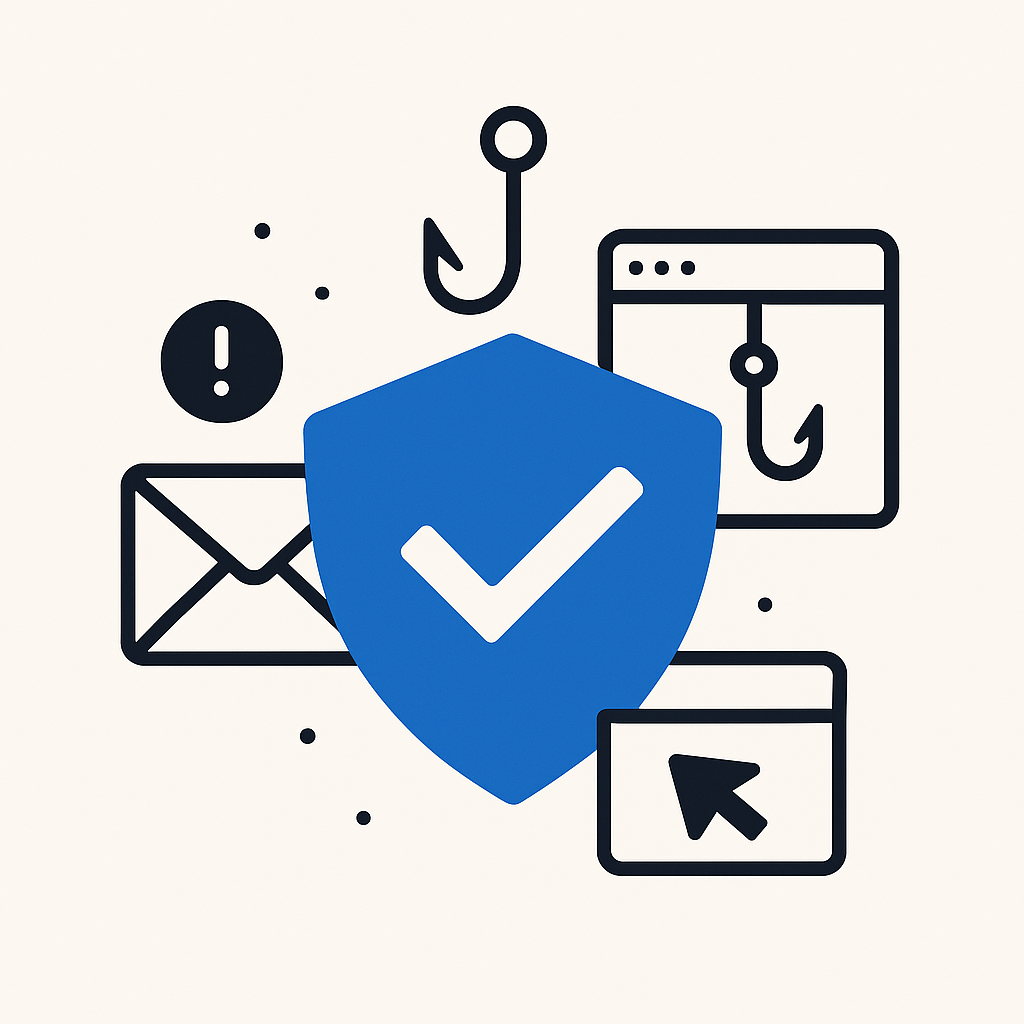Phishing websites and scam emails that misuse your brand name are more than just cybersecurity nuisances; they are direct threats to your company’s reputation and customer trust. Each fake website or fraudulent email that impersonates your brand can chip away at the goodwill you’ve built with customers.
According to the Federal Trade Commission, scams impersonating businesses and government agencies led to an estimated $2.95 billion in consumer losses in 2024. These attacks prey on brand familiarity, tricking people into divulging sensitive information or money by masquerading as “you.” The result? Customers lose trust, and your brand’s credibility suffers.
Defending against brand impersonation phishing is not just an IT problem; it’s a brand protection imperative. Customer trust is hard-won and easily lost: if users receive a scam email that looks like it came from you, many will think twice about doing business with your company again. To safeguard your brand’s integrity, you need to know how to spot phishing attempts, report malicious sites or emails, and proactively protect your customers from fraud. This guide outlines how to identify brand phishing scams and the best practices to protect your brand.
Recognizing Phishing Attempts That Impersonate Your Brand
The first step in protecting your brand is being able to identify phishing and scam attempts that exploit your brand identity. Fraudsters are crafty, creating emails and websites that look legitimate at first glance. Here are some red flags to help you recognize a phishing page or email impersonating your brand:
- Strange or misspelled URLs: Phishing sites often use lookalike domain names resembling your real website, sometimes substituting letters or adding extra words. Check URLs carefully for misspellings or odd subdomains that legitimate sites wouldn’t use. If an email claims to be from your company but the sender’s address is slightly altered, it’s a major warning sign.
- Unsolicited or urgent communications: Be wary of unexpected emails purporting to be from your brand asking customers to “verify your account” or “reset your password.” Scammers create false urgency to prompt quick action.
- Requests for sensitive information: Legitimate companies never ask for passwords, credit card numbers, or personal data via email. If a site or email using your branding asks for confidential info, it’s almost certainly fraudulent.
- Poor design or grammar mistakes: Many phishing scams have telltale signs like low-quality logos, generic layouts, or grammar errors. If the communication doesn’t match your brand’s tone or design, it’s likely fake.
- Mismatched links or attachments: Hover over links before clicking. If the link doesn’t lead to your official domain, it’s suspicious. Authentic brand emails won’t include random attachments or misleading redirects.
-
Training your team to recognize these signs helps catch phishing scams early. Many brands also deploy email filters or anti-phishing tools to flag spoofed domains and malicious content. Quick identification of a phishing attempt can significantly limit the damage to customers and your reputation.
Best Practices to Protect Your Brand from Phishing Scams
Even with strong monitoring, some phishing attempts may slip through. That’s why it’s essential to have a clear response plan for when your brand is misused in a scam. Below are the best practices to help protect your brand and your customers from phishing and fraudulent email scams.
1. Notify and Protect Your Customers Immediately
If scammers impersonate your brand through fake login pages or phishing emails, alert customers and partners right away. Use your verified channels — such as your website, social media, and newsletters — to warn people about the scam. The European Union Agency for Cybersecurity (ENISA) recommends that organizations publish clear warnings and verification steps. Prompt communication not only prevents further harm but also reinforces trust by showing transparency and accountability.
2. Report the Phishing Site or Email to Authorities
Act quickly. Report fraudulent websites and phishing emails to official bodies and cybersecurity organizations.
- File a report with the FBI’s Internet Crime Complaint Center (IC3) or, in the EU, notify local authorities and national CERTs.
- Forward phishing emails to the Anti-Phishing Working Group (APWG) at
reportphishing@apwg.org. - Report malicious URLs via Google Safe Browsing’s report tool.
These actions can lead to browser warnings and domain suspensions, helping prevent more victims. Reporting also contributes valuable intelligence to global anti-phishing databases.
3. Take Down Fake Websites and Accounts
Remove fraudulent sites and social media accounts as quickly as possible. Contact the hosting provider or domain registrar to report the abuse and request a takedown. Most hosts respond promptly to phishing abuse complaints. If the scam involves a fraudulent domain similar to yours, your legal team can file a takedown request or trademark violation claim. For scams on social platforms, use the platform’s own impersonation reporting tools. Fast removal is critical — each hour a phishing site stays live increases the number of victims.
4. Strengthen Your Email and Domain Security
Prevent scammers from impersonating your domain by enforcing SPF, DKIM, and DMARC email authentication protocols.
- SPF (Sender Policy Framework) restricts which mail servers can send emails from your domain.
- DKIM (DomainKeys Identified Mail) ensures emails haven’t been altered in transit.
- DMARC (Domain-based Message Authentication, Reporting & Conformance) enforces policies that reject or quarantine emails failing verification.
-
According to Proofpoint, adopting DMARC reduces spoofing success rates significantly. Also, register common typo or variant domains to prevent fraudsters from acquiring them. Consider setting up monitoring tools or alerts for brand misuse across new domains and marketplaces.
5. Educate Your Team and Customers
Human awareness remains one of the strongest defenses against phishing. Regularly train employees — especially customer support, IT, and communications staff — on identifying phishing emails and following internal response protocols. Run phishing simulations to strengthen vigilance.
Public-facing education matters too. Create a “Security Alerts” page listing recent scams, examples of fake emails, and verification tips. Encourage customers to report suspicious messages to a designated inbox, such as abuse@yourcompany.com, and reassure them that their vigilance helps protect the entire community. As ENISA notes, proactive communication with customers can dramatically reduce the reach of phishing campaigns.
Conclusion: Stay Proactive and Preserve Trust
Phishing scams that hijack your brand’s identity are both a cybersecurity threat and a reputational risk. They can cost your customers money and weaken the trust that sustains your business relationships. Protecting your brand requires a mix of technical defenses, rapid reporting, and clear customer communication.
In the end, brand protection extends to fraud prevention. Every fake “you” taken down keeps your real brand credible. By combining vigilance, authentication tools, and trusted solutions like MarqVision, you can identify, track, and remove fraudulent domains and social impersonations faster — preserving both your customers’ safety and your brand’s integrity across the digital ecosystem.
4 Enforcements a Week to 400: Scale Brand Safety with Marq AI

Don’t Just Find Counterfeits. Dismantle the Entire Network.

.png)
Discover the latest trends and challenges in IP protection

Take Control of Your Trademarks with MARQ Folio

Renew and Manage Your Trademarks Easily With MARQ Folio

We’re waiting to hear from you

See the best brand protection solution in action

Don’t let piracy steal your growth

Talk to us about your brand protection problems

Put an end to impersonating websites
Subscribe to our newsletter
Stay up to date on the latest IP Protection content from MarqVision.









